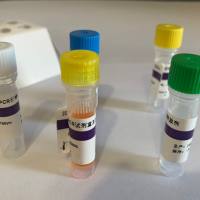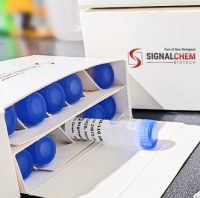Applications of NMR-Based PRE and EPR-Based DEER Spectroscopy to Homodimer Chain Exchange Characterization and Structure Determination
互联网
1229
The success of homodimer structure determination by conventional solution NMR spectroscopy relies greatly on interchain distance restraints (less than 6 �) derived from nuclear Overhauser effects (NOEs) obtained from 13 C-edited, 12 C-filtered NOESY experiments. However, these experiments may fail when the mixed 13 C-/12 C-homodimer is never significantly populated due to slow homodimer chain exchange. Thus, knowledge of the homodimer chain exchange kinetics can be put to practical use in preparing samples using the traditional NMR method. Here, we described detailed procedures for using paramagnetic resonance enhancements (PREs) and EPR spectroscopy to measure homodimer chain exchange kinetics. In addition, PRE and EPR methods can be combined to provide mid-range (<30 �) and long-range (17–80 �) interchain distance restraints for homodimer structure determination as a supplement to short-range intrachain and interchain distance restraints (less than 6 �) typically obtained from 1 H-1 H NOESY experiments. We present a summary of how to measure these distances using NMR-based PREs and EPR-based double electron electron resonance (DEER) measurements and how to include them in homodimer structure calculations.









